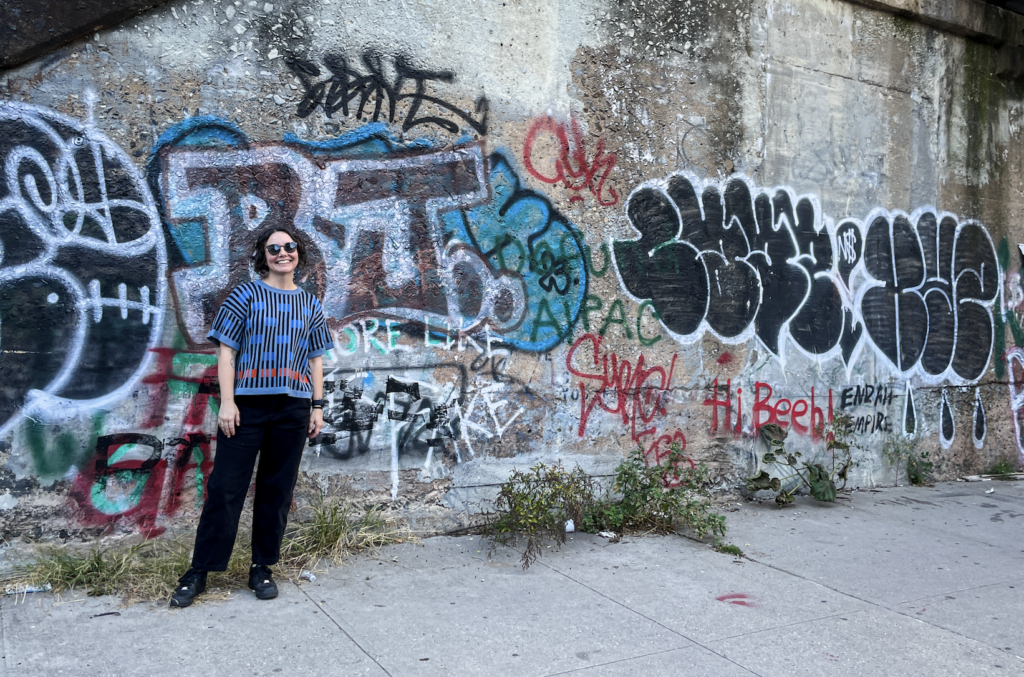Small acts build or break organisational culture. Rebecca Millsop shows us the writing on the wall — our organisational graffiti.
Think of workplace culture as a shared mural — each person adds their own ’graffiti’ through daily actions. Some contributions are bright and beautiful, making the space more inviting. Others, though less visible, have a less positive effect, gradually dulling the environment. These actions can accumulate over time and can significantly shape the overall culture.

Positive Scribbles: The Subtle Acts that Brighten Culture
You might not realise it, but those quiet, thoughtful actions you take are the colourful brushstrokes that bring life to the workplace. Refilling the coffee station before it runs out. Restocking the printer paper. These small gestures keep the wheels turning, creating a space where everything runs smoothly and everyone feels a bit more at ease.
Then there’s the act of recognising quiet contributions — the colleague who keeps things organised or goes the extra mile behind the scenes. It takes just a moment to say “thank you,” but it adds a streak of appreciation and value to the workplace mural.
Problem-solving without seeking attention
— like fixing the office’s tangled charging cables or cleaning up a spill in the kitchen — may seem invisible, but it’s these small, proactive acts that prevent bigger frustrations down the road. Respecting your colleagues’ time by not sending non-urgent emails after hours is another unseen
yet meaningful action contributing to a healthier work-life balance.
Of course, these positive scribbles don’t happen by accident. Leaders who model respect and effective communication help foster this kind of positive culture. According to a CMI report, workplaces with strong leadership see lower turnover and greater employee satisfaction. It turns out that when leaders lead by example, everyone’s brushstrokes become a little more vibrant.
Negative Scribbles: The Acts that Quietly Undermine Culture
On the flip side, small acts of neglect can be like graffiti that detracts from the mural. It may seem trivial at first, but, over time, they build up. Picture the office fridge — forgotten lunches and spoiled food don’t just cause a bad smell; they communicate a lack of care for shared spaces. Or take the full dishwasher — left for ‘someone else’ to handle. These actions send a subtle message: “This isn’t my responsibility.”
Leaving personal items scattered in shared spaces, ignoring communal duties like taking out the trash, or not replenishing supplies erodes accountability. Over time, these behaviours create an environment that feels messy and disconnected.
A study by Dan Hasson & Karin Villaume, published in the Journal of Public Health, found that even small instances of workplace incivility significantly correlate with stress and well-being. Even a few careless scribbles can have a real impact on the entire mural.
Civility and Incivility: Not Just Opposites
Civility isn’t merely the absence of incivility. As Xue Peng’s meta-analysis explains, you can’t simply erase negative behaviour and expect positive culture to appear. Just as a beautiful mural takes intentional effort, so does building a culture of civility. It requires ongoing, deliberate acts of respect and care to truly create a space where everyone feels valued.
What Are You Adding to the Mural?
Every day, little actions contribute to the workplace culture. Are our daily behaviours helping to create a masterpiece, or are they adding a few careless scribbles? A positive culture isn’t built overnight — it’s the result of small, thoughtful acts that make the workplace more inclusive, respectful, and productive. Leadership and communication are key to ensuring everyone’s contributions add up to something worth admiring.
